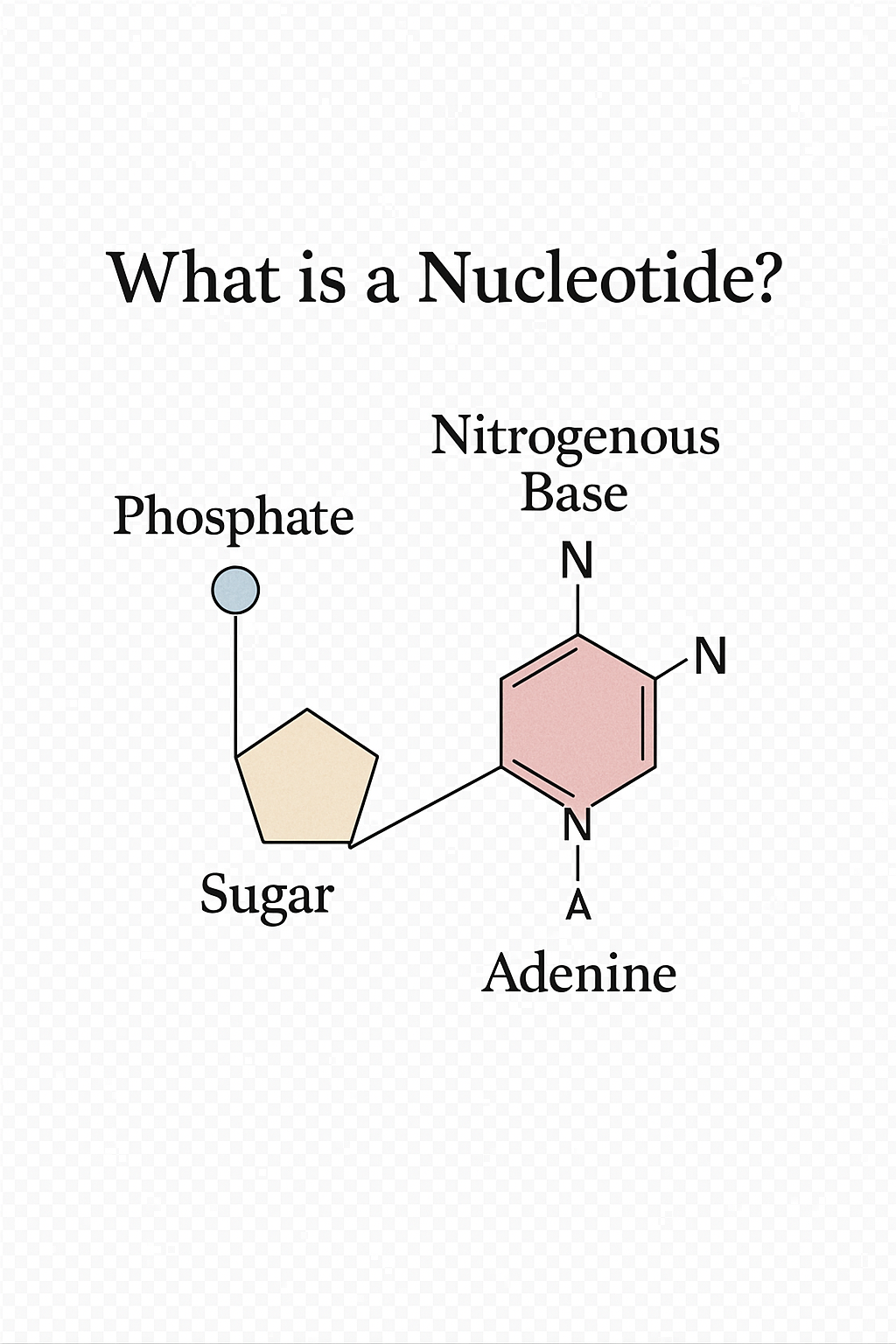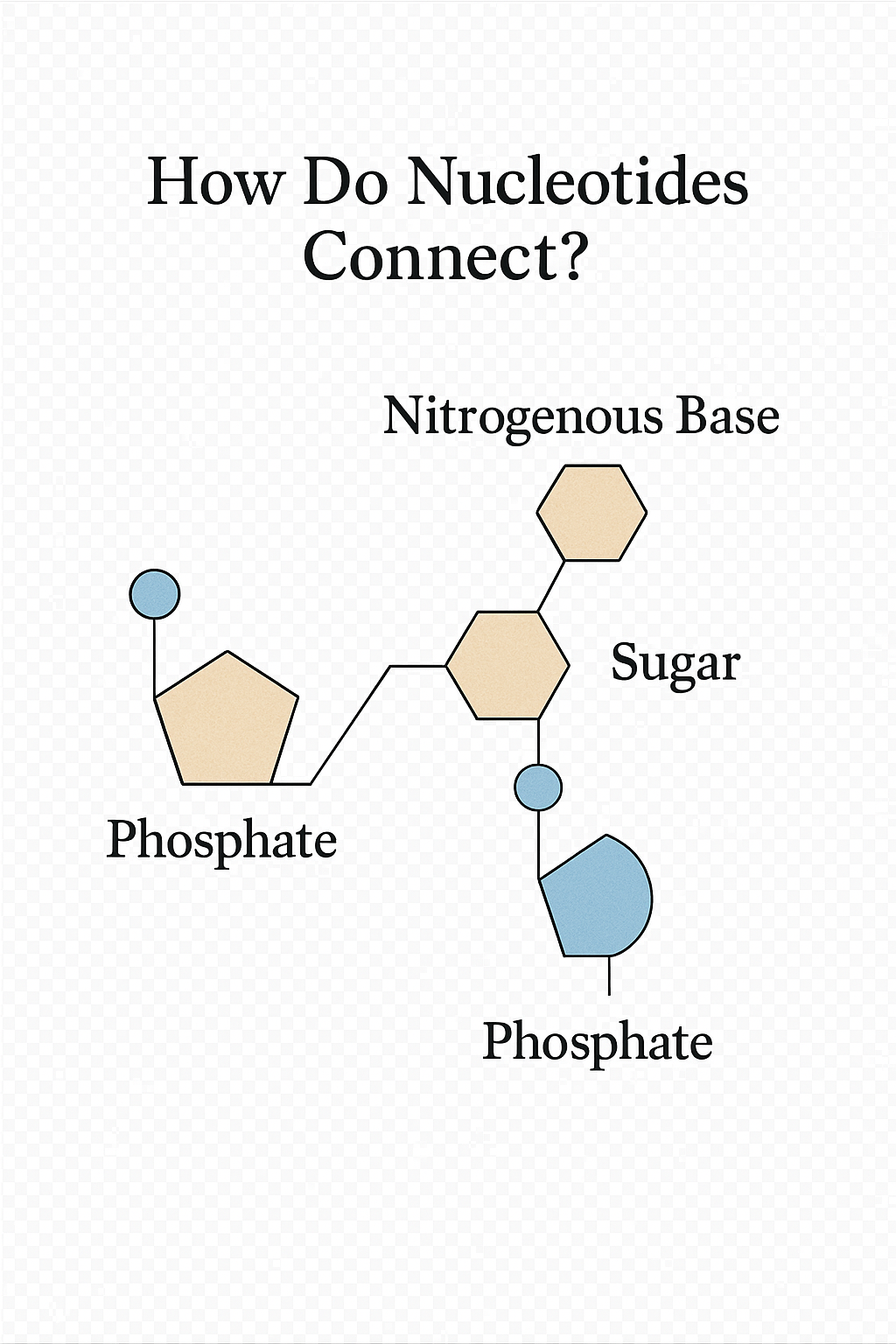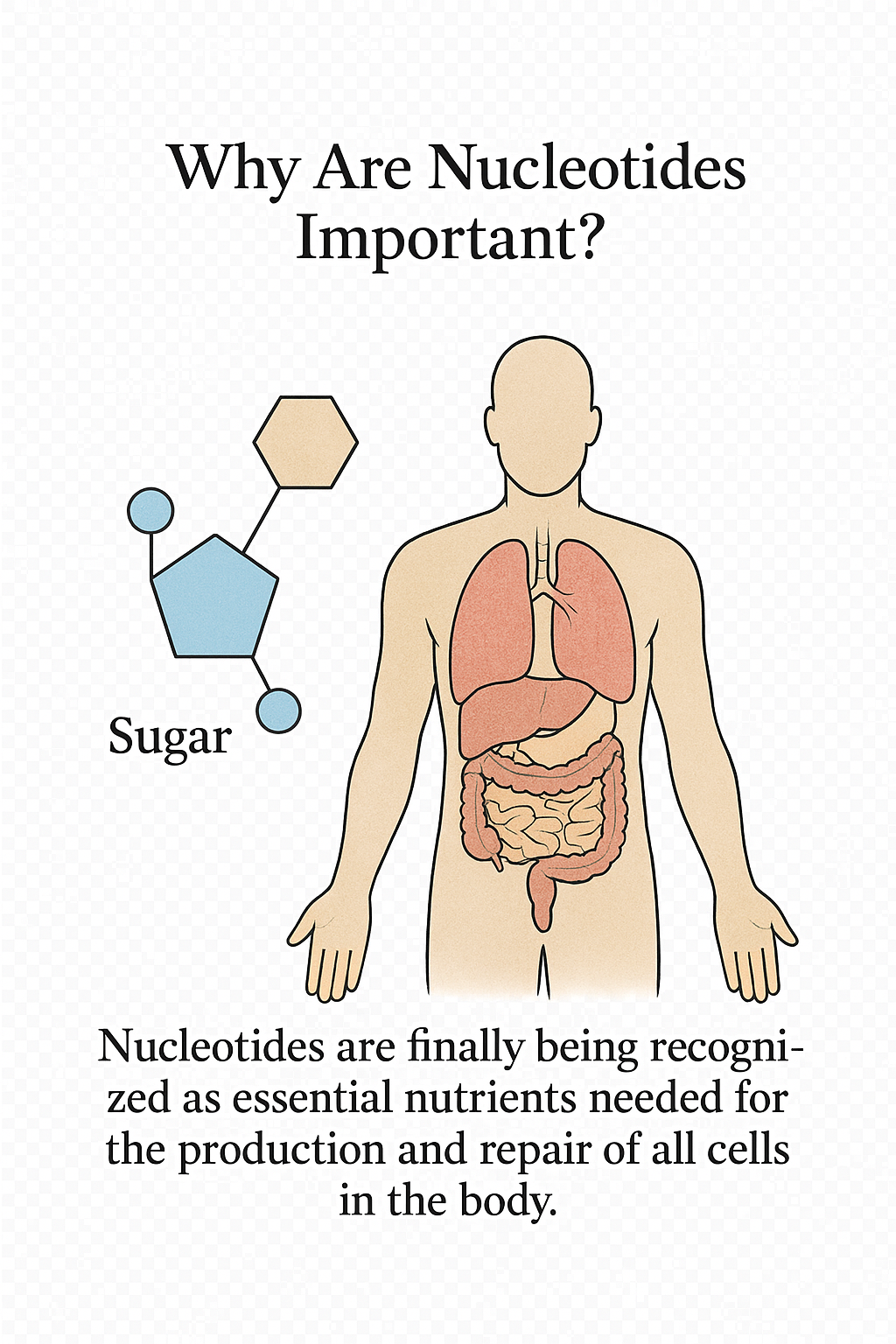
DNA is the building block of all life, and a Nucleotide is the basic building block of your DNA.
But what exactly is a nucleotide? Let’s break it down in a way that makes sense — whether you’re brushing up for a science exam or just feeding your curiosity.
What Makes Up a Nucleotide?

A nucleotide is a molecule made of three parts:
- A sugar (deoxyribose in DNA, ribose in RNA)
- A phosphate group
- A nitrogenous base (Adenine, Thymine, Cytosine, or Guanine in DNA; Uracil replaces Thymine in RNA)
These three components form a single “unit” of DNA. Think of each nucleotide as a bead on a very long necklace — together, they form the DNA strand.
How Do Nucleotides Connect?
Nucleotides join together through their sugar and phosphate parts, creating what’s called a sugar-phosphate backbone. The nitrogenous bases from two DNA strands pair up and form the famous double helix shape.

- Adenine (A) pairs with Thymine (T)
- Cytosine (C) pairs with Guanine (G)
This pairing is essential for DNA replication and function.
Why Are Nucleotides Important?

Nucleotides aren’t just structural — they store genetic information. Every single characteristic of a living organism is, in some way, coded in the order of its DNA’s nucleotides.
On top of that, nucleotides are also the building blocks of RNA, and some act as energy carriers (like ATP – adenosine triphosphate).
